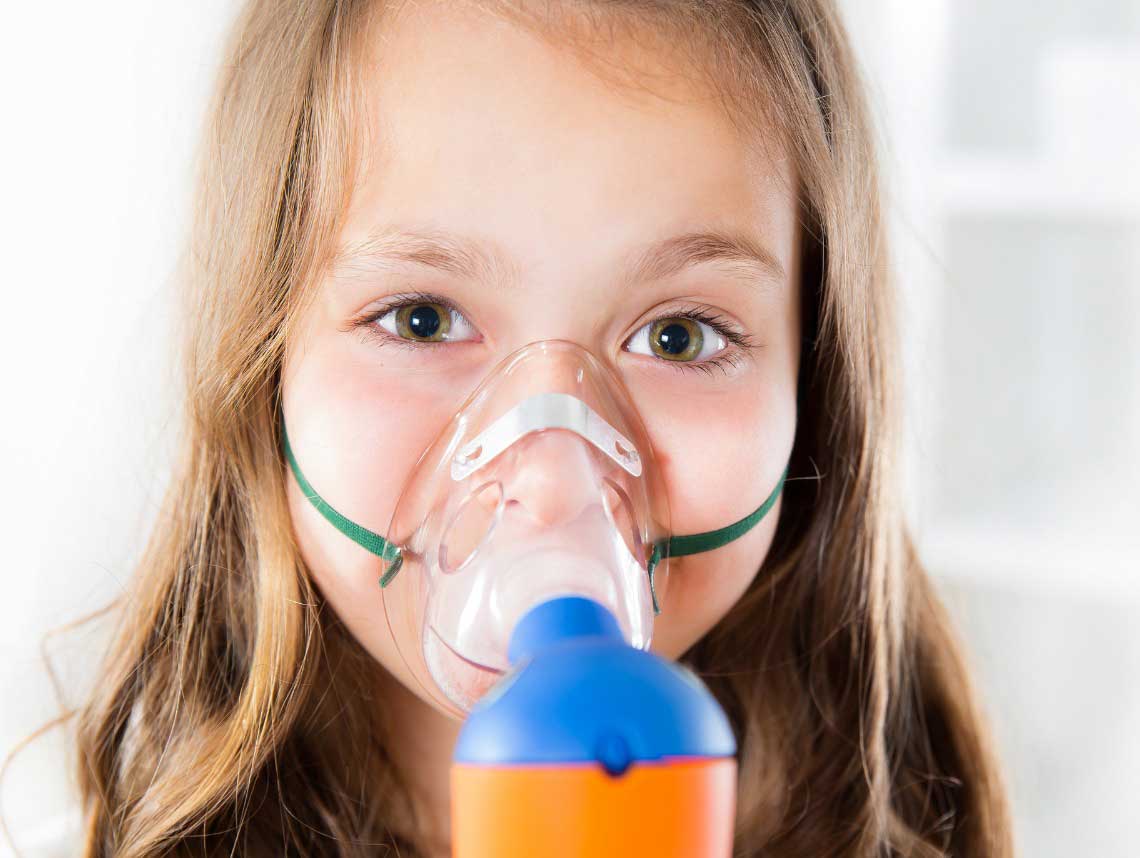One of the scariest experiences for any parent is to see their child have breathing difficulties. While the experience can be terrifying, sometimes it can take a while to recognize signs of pediatric respiratory failure. What are the symptoms? What can you do to provide your child with the best treatment? And, what causes it in the first place?
What is pediatric respiratory failure?
Pediatric respiratory failure occurs when a child struggles to breathe, due to too little oxygen in the blood, or too much carbon dioxide in the blood. This happens when the body can’t get enough oxygen from the lungs to the blood, or when the body can’t remove enough carbon dioxide from the blood. It’s one of the main reasons children are admitted to intensive care units.
There are two types of respiratory failure. Acute respiratory failure comes and goes quickly (such as after a near-drowning experience), while chronic respiratory failure happens gradually and is often the result of an underlying medical condition — such as cystic fibrosis, pneumonia, COVID-19, scoliosis, or spinal cord injuries. It can also be the result of inhaling harmful fumes.
Although the condition can be life-threatening if not attended to promptly, many children who receive treatment fully recover and have no additional consequences from the episode. They’re also unlikely to experience the condition again.
Causes of Pediatric Respiratory Failure
The most common causes of pediatric respiratory failure are viral and/or bacterial infections, as well as asthma. If the root cause is an infection, the body is exhausted of its oxygen stores — especially if the infection affects the blood or respiratory system.
Respiratory failure is also more likely to occur in infants and young children, since their respiratory systems are not yet fully developed. The risk is even higher if the condition is caused by trauma — such as a fall or car accident — that directly injured the lungs or the portion of the brain that controls breathing.
Signs and Symptoms of Pediatric Respiratory Failure
The symptoms of pediatric respiratory failure may vary from one child to the next, depending on the severity of the condition. However, the most common ones include:
- Rapid or labored breathing, shortness of breath / difficulty breathing
- Wheezing
- Loss of consciousness
- Profuse sweating
- Bluish tint to the skin, lips, and/or fingernails
- Low blood pressure
- Extreme tiredness
- Confusion
Diagnosis and Treatment for Pediatric Respiratory Failure
If your child is showing signs of respiratory failure, seek medical care immediately. To confirm a diagnosis, the pediatrician will measure your child’s oxygen and carbon dioxide levels in the blood by conducting what’s called an arterial blood gas test. Your child may also need to get chest x-rays and use a pulse oximeter. Be prepared to answer detailed questions about your child’s medical history, as it may be relevant to the current breathing difficulties.
The treatment for pediatric respiratory failure will depend on the cause. It could include one or more of the following:
- Oxygen therapy
- Mechanical ventilation
- Positive pressure ventilation
- IV fluids
- Tracheostomy
In some instances, getting oxygen therapy is enough to make your child feel better. However, if respiratory failure continues, your child may need an inhaler, intravenous medications, antibiotics, and possibly a stay at the intensive care unit. The stay at the ICU will depend on whether your child has an underlying infection that needs to fully clear. Your child may then have to remain at the hospital for several days afterward to monitor their breathing.
Caring for a Child with Respiratory Failure
The plan of care for a child with respiratory failure will vary, depending on the cause, severity, and whether it is acute or chronic. Once your child has been diagnosed with respiratory failure, it’s important to follow your pediatrician’s care plan for treatment. Be vigilant about the signs and symptoms as you administer treatment and evaluate your child’s response to treatment. It’s important to remember that pediatric respiratory failure is a critical condition that requires constant oversight.
Contact Sonas for Home Health Care in Florida
It can be hard to balance your time between work, home, and caring for a child. That’s why our team of skilled professionals at Sonas Home Health Care is here to help.
Our home health care services offer support in the comfort of your home. We refer loving and competent nurses to provide customized care for families — from a few hours a day to around-the-clock supervision. Contact us directly to speak with a home health care professional or request a free in-home assessment. Together we can determine the best plan of action to keep your loved ones happy and healthy.
If you or a loved one are considering Pediatric Home Health Care Services in Florida, contact the caring staff at Sonas Home Health Care. Call today at (888) 592-5855.
This blog was reviewed by Jillian Miller BSN, RN — Director of Nursing for Sonas Home Health Care’s Tampa Bay market — for clinical accuracy. Jillian Miller has been a nurse for 16 years — working primarily in pediatrics. She believes the best part of working with the pediatric population is when you see smiles from clients when you first enter the room. She loves seeing the difference you can make in families’ lives while providing the best care possible for them.

